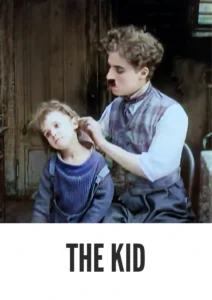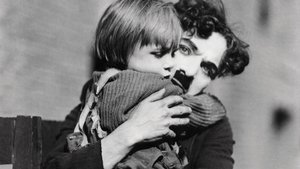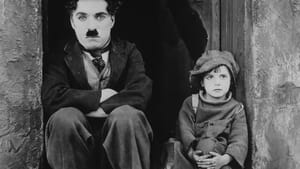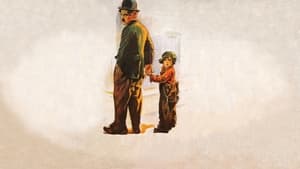Contact: info@alwanfilm.com
Video Sources 0 Views
- Watch trailer
- The Kid

Synopsis
Table of Contents
ToggleReview: The Kid 1921 Colorized – Rediscovering Chaplin’s Classic in Early Colorization

Introduction
Charlie Chaplin’s The Kid 1921 stands as a timeless classic in the annals of cinema, capturing the hearts of audiences with its blend of humor, heart, and social commentary. Now, with its recent re-release in an early colored version, audiences have the opportunity to experience Chaplin’s iconic masterpiece in a new light. In this article, we delve into the significance of this colored rendition and its impact on the enduring legacy of “The Kid 1921.”
Check The Full Colorized Movies List
Check Our Colorized Movies Trailer Channel
Understanding The Kid 1921 Colorized: Director, Cast, and Genre
“The Kid 1921” is the brainchild of the legendary Charlie Chaplin, a pioneer of silent film comedy and one of the most influential figures in cinematic history. Chaplin not only directs but also stars in this heartwarming tale alongside Jackie Coogan, whose endearing performance as the titular kid remains etched in the memories of audiences worldwide. Genre-wise, the film blends elements of comedy, drama, and social commentary, showcasing Chaplin’s unparalleled ability to elicit laughter and tears in equal measure.
Exploring the World of The Kid 1921 Colorized: Plot and Characters
At its core, “The Kid 1921” follows the misadventures of Chaplin’s Tramp as he stumbles upon an abandoned baby and takes him under his wing. Together, they navigate the bustling streets of a bustling metropolis, encountering a cast of colorful characters and facing myriad challenges along the way. Through their unlikely bond, Chaplin explores themes of poverty, family, and the resilience of the human spirit, weaving a poignant narrative that resonates with audiences of all ages.
The Art of Film Colorization
Film colorization, while controversial, offers a unique opportunity to breathe new life into classic films for modern audiences. By adding color to black and white footage, filmmakers can enhance the visual appeal of their creations and introduce them to new generations of viewers. However, the process must be approached with care, ensuring that the integrity of the original film is preserved while enhancing its aesthetic appeal.
Early Colored Films: A Brief History
The history of early colored films is a testament to the ingenuity and creativity of early filmmakers. From hand-tinted frames to early experiments with color processes like Kinemacolor and Technicolor, filmmakers have continuously pushed the boundaries of visual storytelling. These early colored films offered audiences a glimpse into worlds previously unseen, captivating them with their vibrant hues and immersive imagery.
The Kid 1921 and Its Early Colored Version
The decision to release “The Kid 1921” in a colorized format represents a bold artistic choice, inviting audiences to experience Chaplin’s classic in a new and vibrant way. While purists may balk at the idea of altering the original black and white aesthetic, others see value in this reinterpretation, appreciating the opportunity to see the film in a fresh light.
The Debate Over Film Colorization
As with any controversial artistic endeavor, the colorization of classic films sparks heated debates within the film community. While some argue for preservation and fidelity to the director’s original vision, others see colorization as a means of revitalizing classic films for modern audiences. Ultimately, the debate highlights the tension between preserving the past and embracing the future in the ever-evolving landscape of cinema.
Examining The Kid 1921 as an Early Colored Film
Viewing “The Kid 1921” in its early colored incarnation offers a new perspective on Chaplin’s timeless masterpiece. From the vibrant hues of the bustling city streets to the subtle nuances of character expression, colorization adds another layer of depth to the film’s narrative canvas. However, it also raises questions about the balance between artistic reinterpretation and historical authenticity.
Influence and Legacy: The Kid 1921 Colorized’s Impact on Cinema
Beyond its immediate impact, “The Kid 1921” has left an indelible mark on the cinematic landscape, inspiring generations of filmmakers and artists. Chaplin’s timeless tale of love and redemption continues to resonate with audiences worldwide, underscoring the enduring power of silent film comedy.
Director’s Cinematic Legacy: Beyond The Kid 1921 Colorized
Charlie Chaplin’s cinematic legacy extends far beyond “The Kid 1921,” encompassing a diverse body of work that continues to captivate audiences to this day. From his iconic portrayal of the Tramp to his daring exploration of social issues, Chaplin’s films reflect his unparalleled genius and enduring appeal.
Themes Explored in The Kid 1921 Colorized
At its core, “The Kid 1921” explores themes of poverty, family, and the resilience of the human spirit. Through the unlikely bond between the Tramp and the kid, Chaplin highlights the importance of compassion, love, and the bonds that unite us as a community.
Reception and Controversy Surrounding The Kid 1921 Colorized
The release of “The Kid 1921” in its early colored version has sparked both acclaim and controversy among critics and audiences. While some praise the enhanced visual appeal and emotional resonance, others lament the departure from the film’s original aesthetic. Nevertheless, the debate underscores the enduring relevance of Chaplin’s masterpiece in contemporary discourse.
Where to Watch The Kid 1921 Colorized Online
For those eager to experience the timeless brilliance of “The Kid 1921,” the film is available on various streaming platforms, ensuring accessibility to audiences worldwide. Whether in its original black and white format or the early colored rendition, Chaplin’s classic remains essential viewing for cinephiles and newcomers alike.
FAQs About The Kid 1921 Colorized
Common queries surrounding “The Kid 1921” range from its historical accuracy to its thematic resonance in modern times. By addressing these frequently asked questions, viewers can gain a deeper understanding of the film’s enduring appeal and cultural significance.
Q: Is The Kid 1921 historically accurate?
A: While the film is a work of fiction, it offers a poignant depiction of life in early 20th-century America. Chaplin’s portrayal of poverty, homelessness, and the struggles of single parenthood reflects the social realities of the time.
Q: What is the significance of the film’s title?
A: The title “The Kid 1921” refers to both the central character, the kid, and the year of the film’s release. It serves as a marker of Chaplin’s enduring legacy and the timeless appeal of his classic comedies.
Q: What is the symbolism of the film’s imagery?
A: The imagery in “The Kid 1921” is rich with symbolism, reflecting Chaplin’s keen understanding of visual storytelling. From the stark contrasts of light and shadow to the bustling city streets, each image carries multiple layers of meaning, inviting viewers to contemplate the complexities of the human experience.
Conclusion
In conclusion, The Kid 1921 remains a timeless classic that continues to captivate audiences with its humor, heart, and social commentary. Whether viewed in its original black and white format or the early colored rendition, Chaplin’s masterpiece offers a poignant reminder of the enduring power of cinema to entertain, enlighten, and inspire. As we continue to grapple with the ever-changing landscape of filmmaking, let us not forget the timeless brilliance of “The Kid 1921” and the enduring legacy of its creator, Charlie Chaplin.














